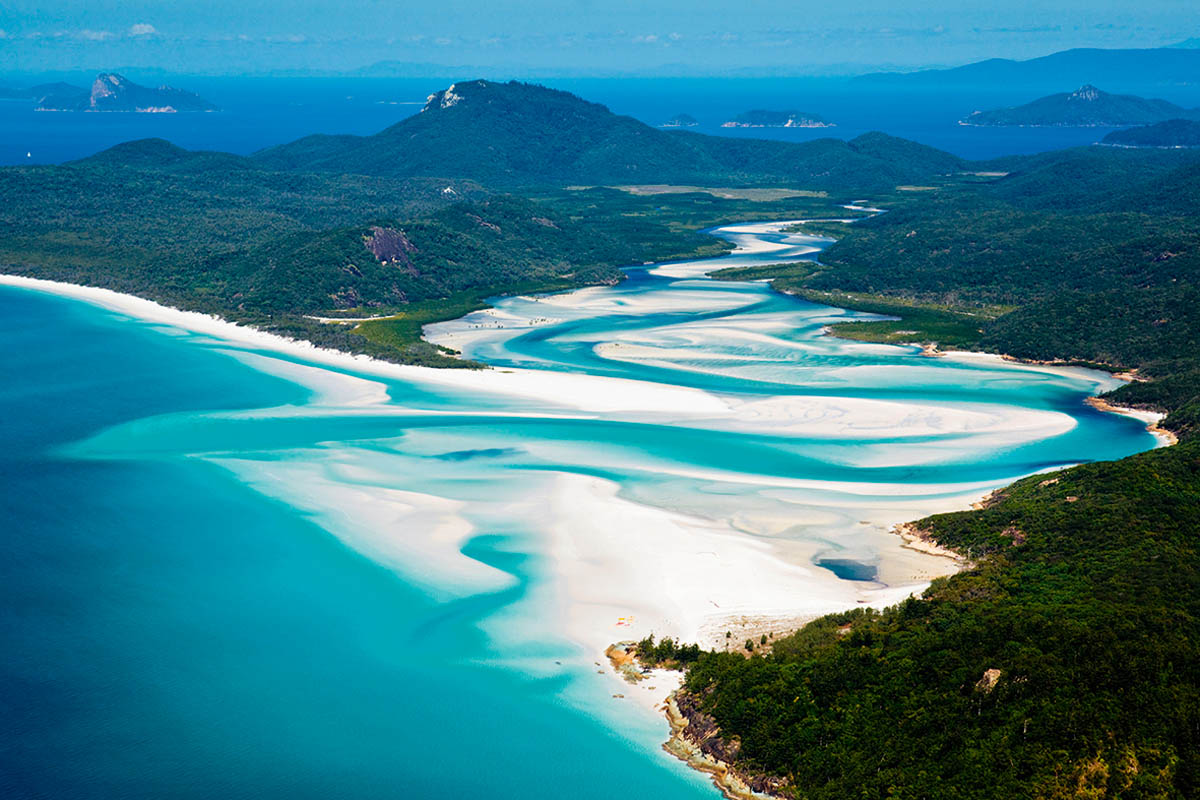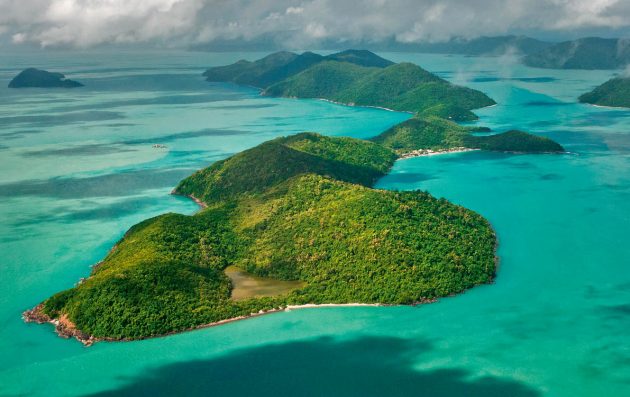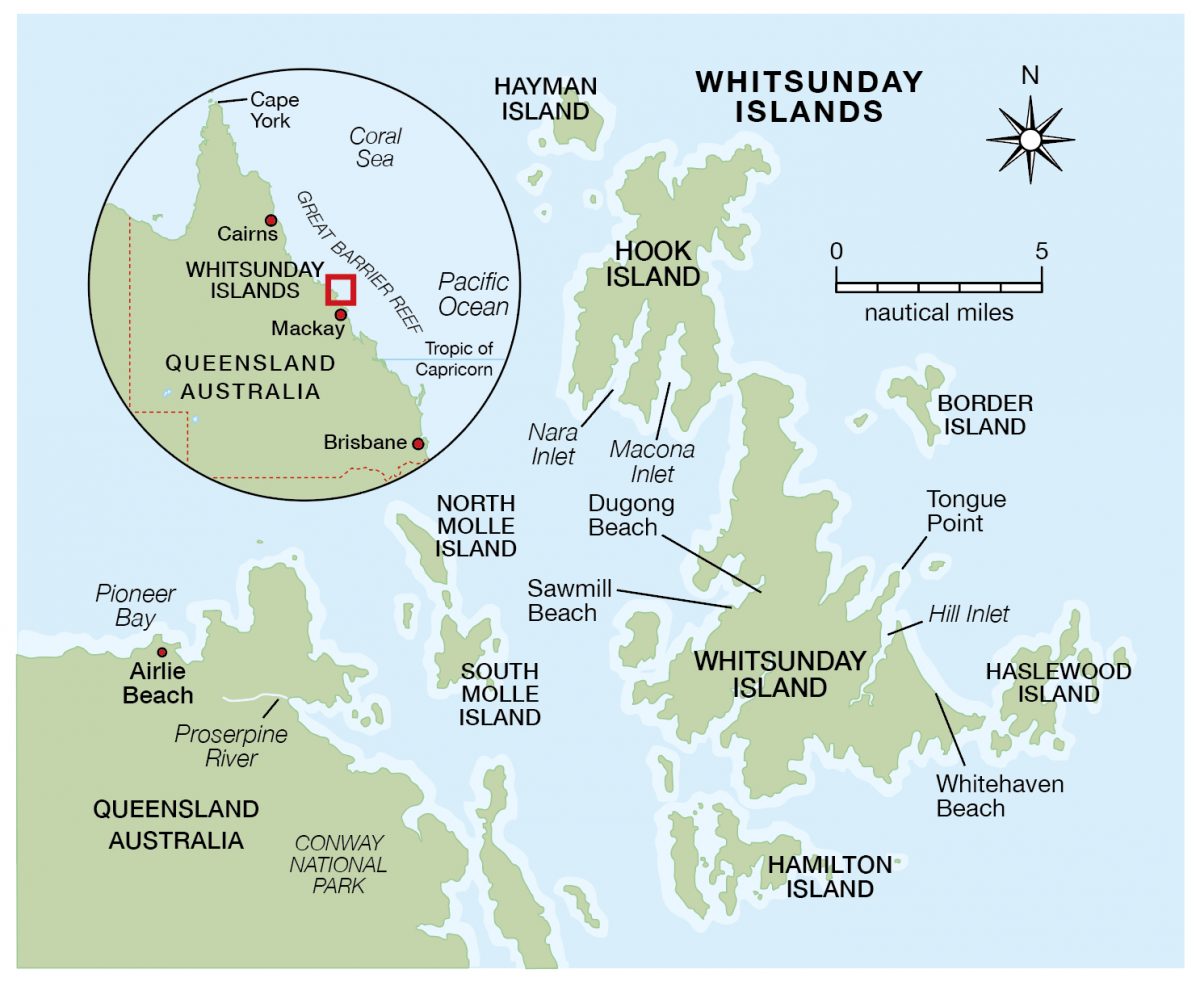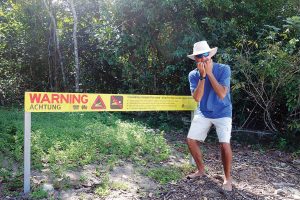Seize the day and see paradise among the Whitsunday Islands, says Huw Williams
Do you want to experience a new cruising ground, something exotic, visually stunning, an adventure with crystal clear water, interesting flora and fauna… and no crowds?
I have the answer. Your starting point will be the small town of Airlie Beach in Queensland, a hub for visitors who want to access Australia’s Great Barrier Reef which lies about 40 miles offshore. Between Airlie and the reef is our destination – the wonderful Whitsunday Islands.
Airlie has several companies that will rent you a bareboat charter. There are monohulls and cats available – I’d recommend a cat. This will allow you easier access to the islands and that spacious, single level living is just perfect for these latitudes. Make sure it has a tender and, perhaps, kayaks. Charter companies can also supply snorkelling gear if you don’t have your own.
There are over 70 islands, but for a two-week holiday I’d concentrate on the ones closest to your starting point – Hook, Whitsunday, Hamilton, Hayman and perhaps North and South Molle. Stock up on supplies in Airlie before departure and have Hamilton Island as a back-up supply stop.
When to go sailing in Whitsunday Islands
You may want to visit in January or February when the UK winter seems like it’ll never end, but in Queensland this is the rainy season, so be advised it will be hot and humid and there can be frequent showers. The upside is the destination is so spectacular you probably won’t care too much, plus charter costs at this time of year are lower.
September and October – spring – is peak season. I was there in June and had an ‘in between’ experience – warm, a few showers and not too humid.
Navigational hazards
Everywhere in the islands is accurately charted and your boat will have a chartplotter, but people do sometimes run aground on the coral so study the charts. For example, Macona Inlet on Hook Island is a great anchorage, but the fringing reef on the eastern side needs watching. In some places, to avoid coral damage, anchoring is forbidden and you must use one of the supplied buoys.
Personal safety: salties, sharks and stingers
We’re in sub-tropical Australia, so the local fauna needs to be treated with respect. Remember, once you get near the water you’re no longer at the top of the food chain.
At the top of the list is the saltwater crocodile. There are crocs – ‘salties’ – all along the Queensland coast, but some areas are more prone to them than others.
The Proserpine River, just south of Airlie, is a major hotspot (they run croc tours) and they have been sighted on the islands.
Crocs can be territorial, so the authorities erect warning signs where they are frequently sighted. Likewise, locations such as slipways where there is frequent activity in the water, and fish tend to be gutted, have permanent warnings in place. As the locals say, be ‘croc wise’. I spent a month there and the only crocs I saw were on the Proserpine River tour.
Next up, sharks. There are thousands of sharks in Queensland, mainly reef sharks, but tigers too. You probably won’t see one but, like the crocs, you must be sensible. Don’t swim at dawn or dusk, and definitely not at night or in popular fishing areas that sharks associate with food. If you’re anchored and chuck food scraps over the side you’ll be ringing a dinner gong!
Finally, jellyfish – what the locals call ‘stingers’. These are small jellyfish that are mainly encountered between October and March. A wetsuit will protect your body, but it’s a good idea to keep a bottle of vinegar (the best treatment) on board just in case.
Things to do in Whitsunday Islands
Snorkelling – Hopefully the information above hasn’t put you off entering the water. It shouldn’t, because the combination of clear water, extensive coral formations and a huge variety of aquatic life means the snorkelling here is phenomenal. You can pretty much anchor anywhere, jump over the side and have a great time. I had lots of memorable sessions and can particularly recommend the area between Nara and Macona Inlets on the south side of Hook Island, and the western side of Whitsunday Island near Dugong and Sawmill Beach.
You can get away with just shorts and T shirt, but a wetsuit will keep you warmer for longer and protect you against the stingers and the coral.
Hiking – Use the tender or kayaks to access the extensive trails, wonderful views and interesting flora and fauna including cockatoos, astonishing quantities of butterflies – at times there are literally thousands in a small area – and large lizards.
I’ll never forget seeing my first monitor lizard: I turned a corner on a sandy path and saw a green tail longer than my arm protruding from a hole. Then the lizard backed out, looked at me and scuttled away into the bush. It was about 6ft in length.
The Great Barrier Reef – Obviously, a must do. You can easily sail to the reef and back in a day, but as a visitor you should resist the temptation.
The reef is charted, but local knowledge is needed to safely navigate and even if you find a ‘safe’ spot you run the risk of snagging and damaging the coral with your anchor. Avoid the stress and book a trip before or after your charter.
Hill Inlet – I’ve saved the best for last. Do not miss visiting one of the most stunning spots in the world. It’s located on the eastern side of Whitsunday Island at the end of Whitehaven Beach.

Aerial view of Hill Inlet and Whitehaven Beach. Whitsunday Island, Whitsundays, Queensland, Australia. Photo: Alamy
Most of the beaches here are comprised of a mix of coral and volcanic rock – what we might call a standard sand colour. Hill Inlet and Whitehaven are different because the sand is pure white silica. So white that it hurts your eyes.
A cat can just access the inlet and you could also anchor off the beach, but as a visitor a better plan is to anchor in the more sheltered inlet just west of Tongue Point, then run ashore and take a short walk to the viewing platform before dropping down onto the sand. Prepare for your jaw to drop.






